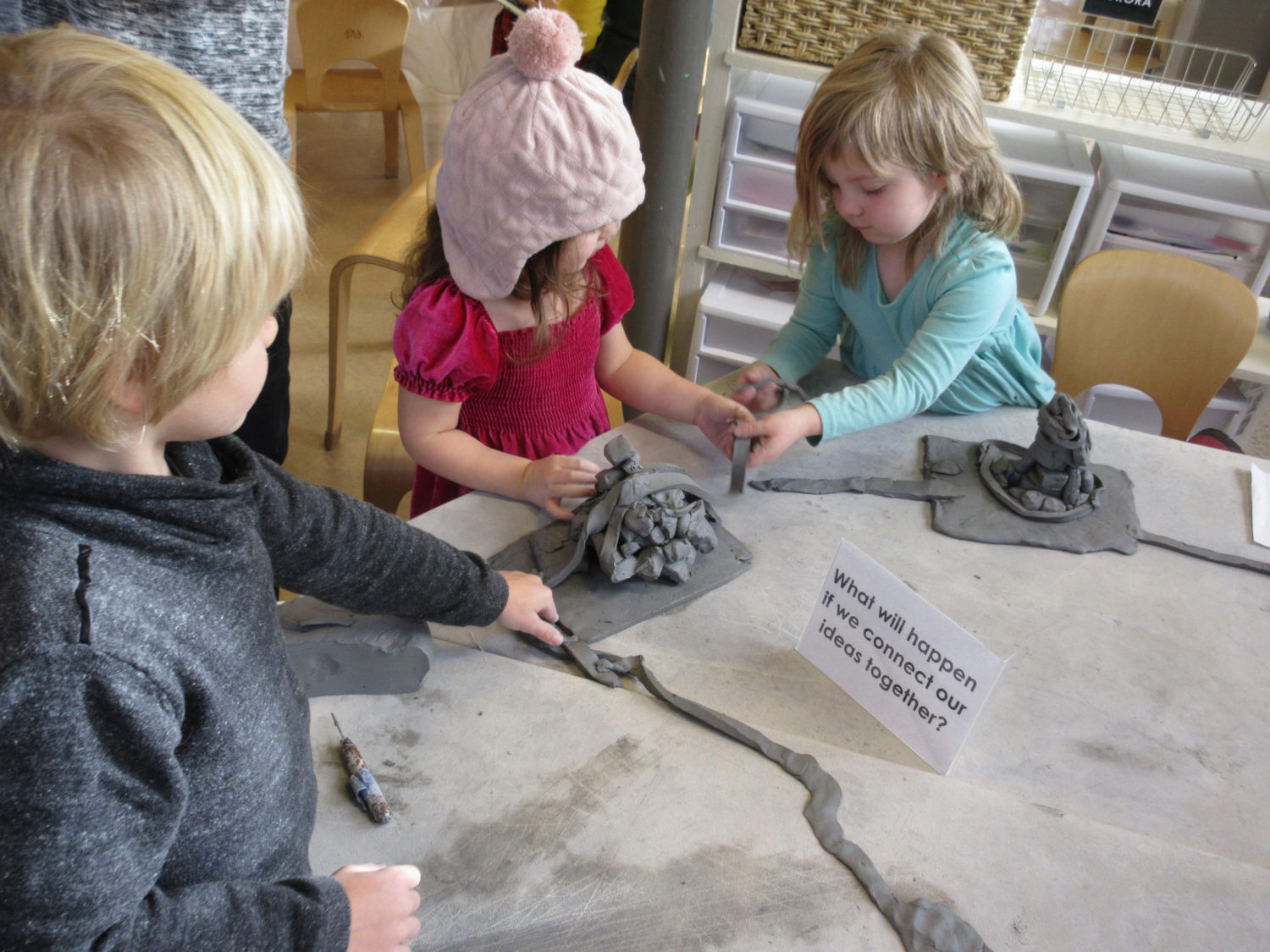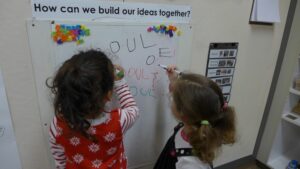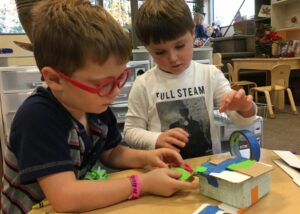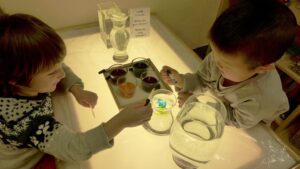Intention Setting and Habits of Mind

Last March, Cedar Teacher Caroline Wolfe wrote a blog post about some of the resources that we use at Opal School when thinking about goals and expectations for children, which includes a body of work by Arthur L. Costa and Bena Kallick identifying 16 habits of mind to use when you are confronted with a problem to which the answer is not immediately known.
Today’s post is in response to a question posed by one of our blog readers:
Are the habits of mind something we discuss with children, or are they used mainly to assess and observe the children to see if they have developed these behaviors?
For example, we were planning to discuss what persistence means with our students -why it is important and what could this look like in our classroom. Do you do something different at Opal?

We believe that knowledge and understanding is constructed through making meaning of our experiences. Therefore, in the social context of the classroom, we make visible the habits of mind that they are using to grow new understandings together in a variety of ways. Here are some stories from the preschool classrooms to share a few possibilities for how we collaboratively make meaning of these habits of mind, and what it might look and sound like in action.
In the first weeks of the school year, the Alder teachers pause to consider the next book we would like dive into for our next read-aloud with the children. We noticed that several conflicts came up around waiting and turn-taking in the first weeks of school as the children begin to build trust and strategies for navigating waiting and turn taking. We selected the book Waiting is Not Easy by Mo Willems as a way to approach this idea playfully through our friend, Gerald, the protagonist in the book.
After the teacher began to read the book, she paused to invite the children to begin to connect and make meaning of the text.
Teacher: “What are you noticing? Why is Gerald saying, ‘groooaaaaannnnnn!'”
Child : “He is getting mad. It’s taking too long.”
Teacher: “So you’re noticing that he is feeling impatient, and how hard it is to wait. Give a little twinkle with your fingers if this has ever happened to you before.”
In this exchange the teacher both mirrors back the child’s thinking and invites the rest of the class to efficiently participate in connecting to this idea of waiting by waking up a personal connection.
Many hands flutter up in response.
Teacher: “So something amazing that we are noticing is that you might not want to wait, but every day we see you all waiting to take turns to talk, or to wait in line, or for a material that someone else is using, and so we are wondering–how do you do that? What do you tell your brain that helps you to wait?”
The teacher mirrors back, in a general way, the children’s productive behavior observed in the classroom when faced with having to wait in a variety of situations. Then she invites them to reflect and be metacognitive about how they support themselves to do something hard, like waiting.
Child 1: I just say to myself, “It’s ok, you’ll have a turn soon!”
Child 2: I just tell my brain to wait.
Child 3: Sometimes I say, “groaaaan!”
Child 4: I just think I can do something else.
Teacher: Wow, so you have figured out a little bit of magic – how to make a hard idea a little easier by stretching out your idea to make room for a different idea. That’s being flexible! Are there times you are connecting to right now that you have had to be flexible?
Here, the teacher offers new language to describe these intellectual strategies as a way for children to connect their experiences to a bigger idea (in this case, thinking flexibly).
Child: When my brother is sleeping and I have to wait to play a game
Teacher: Is there something that helps you? The teacher asks this question to offer a gentle nudge to go a little deeper into their thinking.
Child: Sometimes I cry and sometimes I play something else.
And then an invitation to the whole learning community to pay attention to this habit of mind, thinking flexibly. In this way we have elicited children’s experiences to connect to this idea/this habit of mind, thinking flexibly. Let’s keep noticing when we’re being flexible, what helps us and how it feels inside and to our community.
_________________________
This shared experience and open invitation to be paying attention to when we are being flexible becomes the catalyst and reference point for furthering our shared understanding of this idea with the children. We continue to both pay attention to the inevitable moments that come up in the daily living in the classroom, as well as create situations for the children to continue to practice, reflect on, and connect their experiences of thinking flexibly.

I’ll share one story of how it might sound when presented with one of these inevitable “daily living” moments.
We are about to line up in the hallway and have been supporting the children to grow and share their understanding of their experiences of thinking flexibly – when this is easy to do an when it is a challenge to do so.
Teacher: We are about to line up in the hallway and you might not get to stand just where you wanted to stand. How can being flexible support our community?
In this way the teacher is inviting the children to access what they already know about thinking flexibly and activates their schema for some strategies that they can try.
Child1: I can find a different place to stand.
Child2: Even if I don’t stand next to you, you’re still my friend.
Teacher: What is more important, being flexible and getting there all together with everyone as your friend, or choosing only one person to be your friend?
The teacher invites children to come to their own conclusion about why they might choose being flexible.
_________________________
Here is one possibility for when the teachers create an opportunity for the children to practice thinking flexibly.
The class is about to begin to act out a favorite story, but first it needs to be decided who will act as which character, and who will not have an acting role this time. For time efficiency, the teacher has suggested that randomly pulling sticks with children’s names could be how it is decided who plays what part this time, and the children agree.
Teacher: So, there are more of us than there are parts to play in the story. I’m wondering if that might feel disappointing to some of you.
Child 1: That’s OK. I can be flexible. I can tell my brain, “Maybe next time!”
Child 2: Or I can say, “Well, that isn’t the part I wanted, but I’ll try it.”
Child 3: Or, “Maybe we’ll do this again.”
Teacher: Sounds like we are getting some great ideas for what we can tell our brains to think flexibly, which might help our disappointed feelings.
Questions to consider:
What strategies do you find yourself using to be aware of and practice these Habits of Mind for yourself and your students?
How do you make these Habits of Mind visible to yourself and the students?
How do you create conditions in your classroom where children need to access, develop, practice, reflect on and grow these Habits of Mind?

